Larysa Bondarieva: “Demand for financial products for land market already exists”
The current year was rather difficult both for Ukrainian agrarian sector and banks that finance agricultural companies. The pandemic and quarantine restrictions, economic crisis, unusual draught in some Ukrainian regions that challenged the solvency of many market players – the list can be continued. However, the volume of agro lending is increasing and this allows the banks to be carefully optimistic about the future. How was the past season for agrosector in finance market and how is the banking system getting ready to opening of free agricultural land circulation – read in the exclusive interview with the Deputy CEO in charge of corporate business and SME of Credit Agricole Bank Larysa Bondarieva.

Larysa, two years ago you told the Landlord about Credit Agricole Bank’s plans in the agricultural segment. In particular, you told about the intention of growth by 10% annually in this sector. Two past years were rather successful for the Ukrainian agrosector in terms of production and export. At the same time, another structural crisis has started globally, the pandemic and lockdowns destabilized financial system. Did the bank manage to implement its plans and how was it affected by the crisis?
The situation is not easy due to the crisis and certain problems that have arisen in the economy and financial environment. However, we fully implemented all our plans concerning 10% annual increase. For me personally, the positive factor is that we achieved growth due to two factors. First, the bank increased loan portfolios of the existing clients not only by financing current needs of the entities(supporting sowing campaigns, working capital, etc.) but also because customers raised funds for new investment programs. Another, even more positive factor of the increase was the expansion of the customer base of Credit Agricole. During this time, our local managers worked hard to engage new partners and, depending on the region, our client base increased by up to 15%. And therefore, our general growth I mentioned before, was supported by new names: both large agrarian companies and, which is especially important for me, farming entities of the SME segment. Thus, we ensured growth in all segments despite the fact that the economy and the society in general were affected by the crisis.
What was the impact of the crisis on the agrarian segment from the banking system standpoint?
First and foremost, we felt it through the change in customers’ behavior – they needed time to adapt to new conditions and additional workout of their projects. This period fell on the spring and the beginning of summer. As soon as the lockdown was eased, we started meeting our clients actively in order to understand their moods and plans for the future. Now we understand that the entities have only suspended their investment plans and that they were rather interested in fund raising. We need to clarify something here: the Ukrainian business in general and the agrarian business in particular have one feature – they rely upon themselves. Of course they take the economic situation and macroeconomic processes into account but they plan their activities based only on their own capacity. In other words, when the client contacts us, for instance, looking for finance for the investment project, it means that the company has already estimated its capacity to implement it. The situation used to be different: a client would get an idea and would ask us: “How can you help me?”. This is no longer the case. Entrepreneurs plan their cash flows, consider the return and move very carefully. But they do move and this allows us to be moderately optimistic about the future.
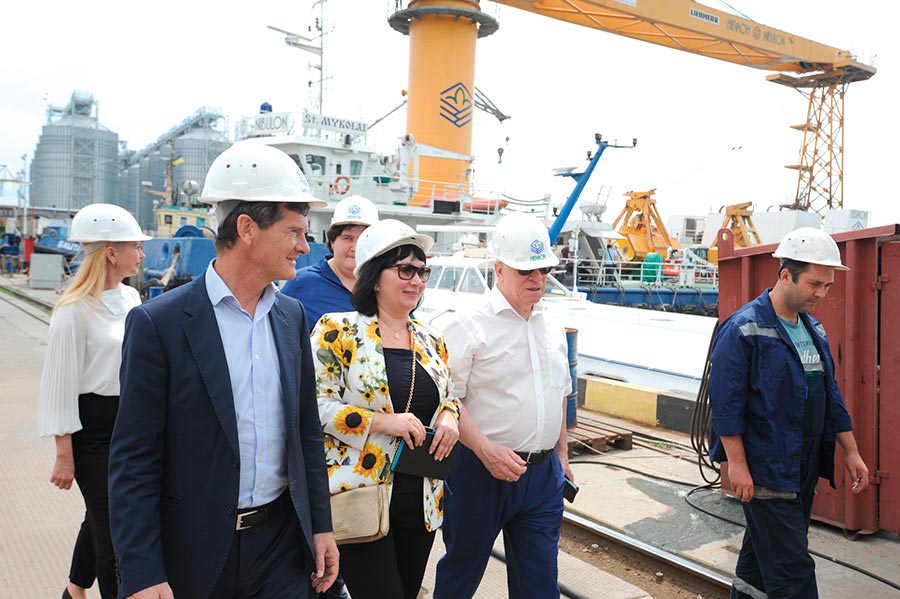
How did the investment picture change over the year in agro? Which loans do you issue most frequently, in terms of their target?
In case of medium-sized companies, in 2019, we observed reduced investments in the upgrading of the machinery fleet. On the one hand, the fleets were actively renewed in the previous years, on the other hand, customers expected the land market opening and carefully spent money on new equipment. Last year, the draft law on circulation of agricultural lands under which legal entities would have access to the market was actively promoted. This created a certain changes in the market: the companies revised their investment plans having in mind that it would be possible and needed to invest all funds in the land. In 2020, the situation changed. The adopted law on land circulation concerns mainly individuals and the entities that accumulated certain financial reserves restarted investments into machinery.
Long-term draught that especially affected Bessarabia conditioned the need to invest in counteracting climate changes. We see that the demand for irrigation funding increases and we have already implemented some projects. Thus, the draught triggered the interest of both entities and their partners – equipment suppliers and banking institutions.
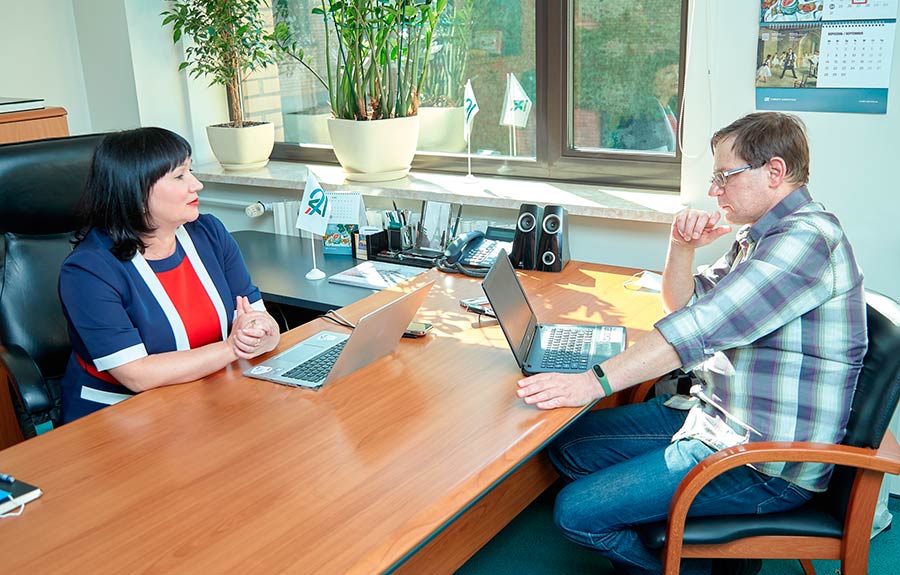
Credit Agricole Bank has the second biggest loan portfolio as part of the state program «5-7-9%». Under the program, 90% of funds are raised for refinance and working capital needs. What is the place of these issues in the activities of the bank?
Working capital finance is a permanent element of our dialogue with customers and a larger part of our loan portfolio. There are different forms of working capital finance: classic lending, bill avalization, guarantee issue. For sure, there is also refinance.
In addition to the program «5-7-9%», our bank takes part in the governmental program of agricultural producers support, within which covered both: working capital and investment programs finance. All in all, about one third of the our SME loan portfolio in the agrarian sphere is represented by partnership programs whose significant part provides for the financing for investment.
State support programs gave some fresh air to our farmers and the demand is very high. As long as there are such programs on the market and the interest from our customers to join them are exist, our bank will also take an active part in them. Yes, agribusiness wish to reduce the amount of paperwork to receive state finance. It was especially noticeable during the confinement when the remote servicing was so much required. So, we hope that workflow simplification and process automation will be the next step taken by the government.
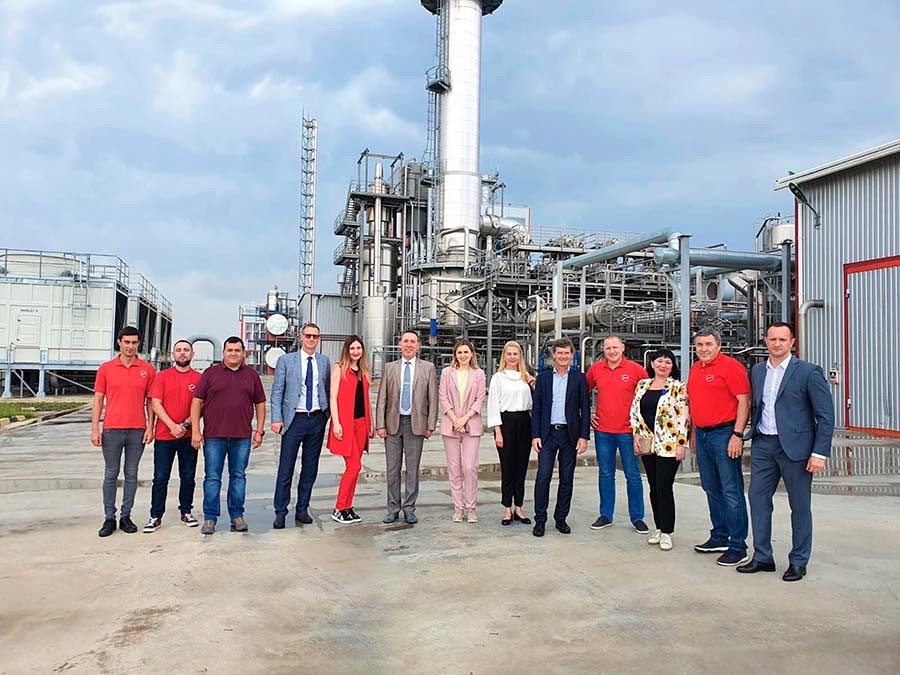
By the way, how did the crisis and lockdown affected the Ukrainian banking system functioning? Which changes were, in your opinion, the most visible and where there any positive changes?
The first reaction of both banking system and our clients was, obviously, more careful attitude to finance. We assessed the risk related to financing in general and to liquidity in particular. Going ahead, I can say that unlike in the prior crises, the liquidity levels did not reduce but, the other way around, increased in all client segments. This could be caused by partial suspension of investment programs. In fact, these are two sides of the same process: both banks and customers analyzed funding risks very thoroughly. Another positive thing was the stability of UAH to USD and EUR exchange rate – nothing unexpected is happening in the currency market. In the summer, after the replacement of the NBU Governor, the bankers had concerns about the stability and about potential currency turbulence. But as we could see, there were no negative effects: the NBU supports the stability vector and this was particularly important for us.
What was new is the need to adapt to the new situation when we had to secure both the staff and the clients during the health crisis, and to transfer as many staff members as possible to the remote work. Before that we talked a lot about electronic workflow, process digitalization, remote communication with customers and took a lot of time for preparation. But then we found ourselves in the situation when all this should have been done as quickly as possible. It took us two-three weeks to reset ourselves and to provide our staff with the possibility of remote work subject to all information security requirements. That was a true mindset revolution. I remember that last year the bank was considering the possibility for a part of the bank's team which can perform their duties remotely, but at that time we had no answer. It turned out to be possible: up to 80% of Head Office staff works remotely.
You’ve already mentioned the reaction of the agromarket and the respective part of clients to the crisis. Which changes occurred in other sectors?
At the beginning of the crisis, we analyzed risks for all industries of our presence. About 50% of our portfolio is represented by agri/agro finance, the other half is diversified by various industries.
For example, automobile industry had rather painful first reaction to instability but at the beginning of summer we could see a new wave of activity in this market. The same happened with other areas: we never stopped our activity but continued supporting our clients. As a result, we did not see such a drop in activity as during the crisis 2014-2015.

As we started to compare the current situation with the period of 2014-2015, what has changed in the agrarian banking? What new banking products were offered?
We have already had an almost complete set of products and now we have added the last one missing – leasing. In the mid August we signed the first partnership program and concluded the first agreement with the client. The program is signed with an agricultural machinery distributor who will supply the machinery and ensure technical maintenance.
The price for this product is comparable with the classic finance. =The tenors of the lease agreement are nearly the same as for the investment finance: the client chooses the product with the most acceptable financial model.
To do it, we needed to go through the preparation stage. The launch of leasing was supported by the Paris office. The most important is that the product is demanded by customers. I am very pleased to realize that the bank has widened the opportunities for the clients despite the crisis and the turbulence. Even in challenging times we keep developing and look into the future.
What about agrarian receipts? Currently, the IFC project is completed and the receipts became a normal tool. Will you continue working with them?
We work with this tool. I can’t say that there was a very high demand for agrarian receipts from our clients, but still we will continue working in the future with this tool.
What was the result of the bank in lending to agriculture, i.e., what amount of funds was lent to the sector?
In the agri segment (agricultural producers) the growth was 10% and our result was UAH 7 billion. This segment is mainly represented by SME and mid-sized corporate business. If you take the entire agricultural complex agri-agro (including storage, processing and trading), the loan portfolio is UAH 13 billion. And agro already has more large companies that have complex business and work with trading and processing in addition to growing agricultural products.
In the interview recorded two years ago, you mentioned that Credit Agricole started working with clients having 400+ ha of the land bank and you had plans to set the minimal level of the processed land areas of 200 ha. Were your plans implemented?
Yes, we implemented our plan to grant loans to small farmers processing 200+ ha of land. The loan portfolio in this segment is not very large, development is gradual. The processes should be adapted for the clients of this category. They need everything faster and simpler. Even to communicate with a small farmer constructively, one needs to be prepared. We continue to work in this direction because we see the demand for the product in the regions.
Let’s move on. The new land law will most likely result in the big number of “100 ha” farmers in the market as this is the size of land allowed to be sold to one individual. Is the bank preparing to the demand for products for this category?
We certainly consider this scenario and are getting ready to it. Moreover, Credit Agricole operates in European countries where this type of a farmer – with the land bank even below 100 ha – is the key client in agro sector. They have developed the processes, products, know-how for such financial services rendering.
We understand that this segment has specific risks related to insufficient resources or lack of financial knowledge, logistics problems, etc. But we also understand that without support and appropriate financial instruments such entities cannot develop. So, we are interested in this segment and study what products we can offer it. Given our experience of launching products for 200+ ha farmers, I can tell you that the bank has already considered how to simplify the workflow, to make document completion easier, reduce time for decision making and also maintain the quality of loan portfolio.
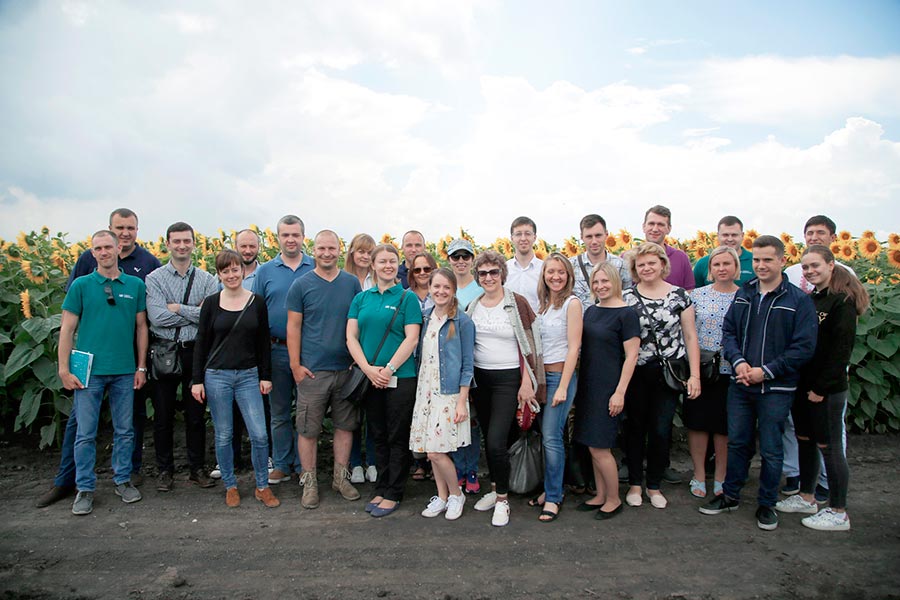
Two years ago, Credit Agricole launched its “Agro School” project. When you mention due level of expertise, do you mean specialists who were trained there?
For Credit Agricole Bank, agro is not just one of the strategic vectors. This is our DNA and one of the pillars holding the entire business of the bank. If agro holds such an important position, the approaches to this area should be special. Naturally, the majority of our employees were experts in financial area but not in the agriculture. Therefore, the bank has got a team of agroexpertise. When agrolending reached 50% of our portfolio (and it keeps growing), we realized that a small team is not enough to, first, speak the same language with clients, and second, mitigate the risks of the bank. We asked the farmers: what needs to be improved? And we got the answer: we wish your specialists understand agrarian business better.
Our response to this challenge was “Agro School” where not only front office employees or branch managers get trained but also credit analysts and risk managers. The objective is to give them knowledge and understanding of agro processes (crop growing, animal breeding, storage, processing, etc.), ability to calculate the added value of the investment project for the customer and many other useful skills. This is a classic business school – six modules, practice at the enterprises. Among teachers, there are our clients and partners. The school had two graduations, i.e., almost 50 students who enhanced our agrospecialist team. In my opinion, the most important achievement is that our managers speak the same language with agrarians, which means a new level of trust.

In 2020, the NBU gradually reduced the key rate and there were many forecasts concerning lending rates reduction, which partially came true. According to your estimates, what can be further lending rates decrease?
Currently, the market is rather active and flexible: the banking system balanced the size of lending rates according to the guidelines set by the NBU. But there is another side of the coin – rates on deposits which are the liabilities for the bank. For sure, the customers who get loans want their loans to become cheaper as soon as possible when the regulator reduces the key rate. Being a financial institution, we are always interested in the maximum activation of customers. But since banks have a deposit base, we always have to balance and the process is objectively slowed down.
Nevertheless, since the beginning of the year, lending rates have already substantially decreased. Cost of financing depends on particular borrowers and projects. It is also formed under the influence of inflation processes, macroeconomic situation, and actions of the regulator. The latest information from the NBU is that the size of the discount rate will not be reduced, what will father ― we will see.
Another issue of the discussion ― prospects of agro insurance market in Ukraine. Does Credit Agricole Bank have such product?
We had such product proposed together with AXA company (currently ARX). The demand was very limited, this instrument is not fully trusted. May be the reason is in the high price of the product even though we covered 50% of insurance costs.
Now we continue to develop this direction and negotiate with a number of insurance companies. The bank wants to include agro insurance to our product range but we act very carefully given low demand.
In less than a year from now, the land market should open, as we have already discussed. The launch of the land market without finance will be impossible. What is the current demand and how does the bank get ready to it?
We have always been dynamic in adjusting our products depending on changes in the market. For sure, we will take part in the process of the land market launch and now it is the key question at our meetings with customers. Thus, the demand for financial products for land market already exists but we have to pass the stage of their development and adaptation according to the final market parameters. What are we guided by? The product must be convenient, accessible, with sufficient return period and at acceptable price.
The land will become collateral – what will change for the bank provided that the law contains a provision that protects interests of banks?
Banks will have more comfort, more opportunities, more willingness to lend. The customers will get more opportunities as insufficient collateral or pledge is one of the constraints in many cases. Thus, land market opening will fundamentally change agrosector finance and will bring it to the new level. For example, irrigation projects with long return period will be much accelerated.
Return on land is a long-term process. What lending tenors are being considered now?
This is a subject of special discussions in the banking environment. Currently, the Ukrainian banking system cannot offer European conditions where land purchase loans are granted for 15-20 years and even more. But we understand that standard conditions of 3-5 year investment lending are not applicable in this case. Therefore, 10-year loans are mainly discussed at the moment.
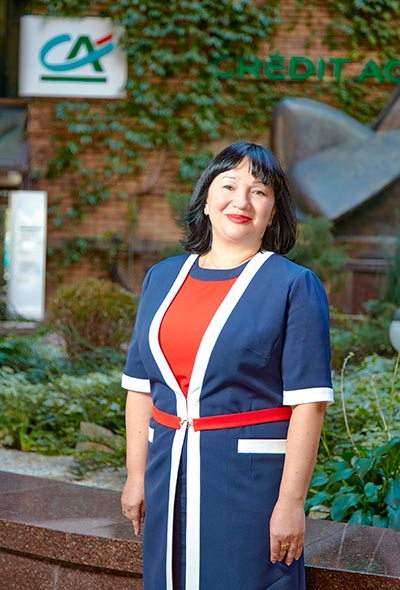


 Useful information
Useful information
 Useful information
Useful information
 Useful information
Useful information
 Useful information
Useful information
 Useful information
Useful information
 Useful information
Useful information
 Useful information
Useful information
 Useful information
Useful information
 Useful information
Useful information
 Useful information
Useful information
 Useful information
Useful information
 Useful information
Useful information
 Useful information
Useful information
 Useful information
Useful information
 Useful information
Useful information














